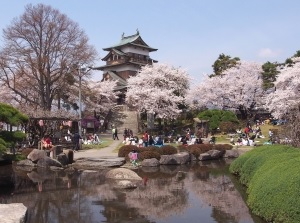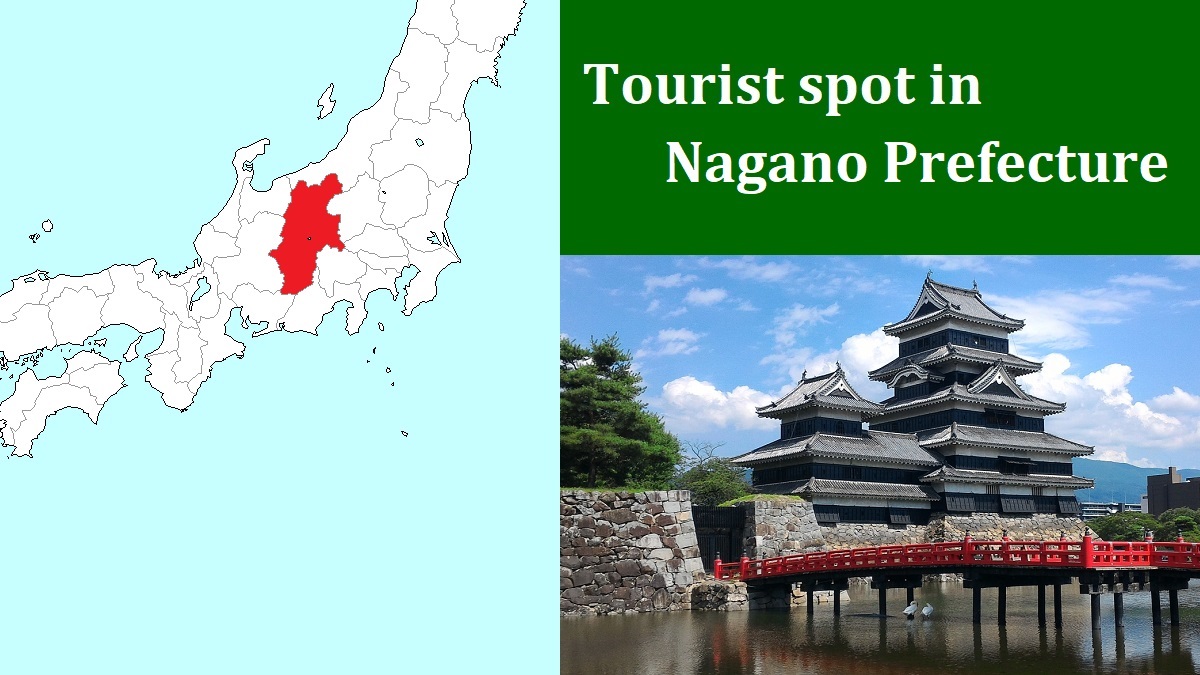Lake Suwa [諏訪湖]

Lake Suwa

Pleasure boat in Lake Suwa

Lake Suwa is a lake located roughly in the center of Nagano Prefecture.
In Japanese, it is called Suwako.
It is shaped like a rectangle, and the length of the longer side is about 4.5 km and the shorter side is about 3.5 km.
It is in a basin.
Suwa city is on the east side and Okaya city is on the west side.
On August 15th every year, the great firework festival is held on the lakeside in Kami-Suwa district in Suwa city.
It is one of the largest firework festivals in Japan, and about 500,000 viewers visit here.
More than 40,000 fireworks are set off at Hatsushima, an artificial island for the firework, near the lakeside.
Kami-Suwa district has a hot spring resort, and several hotels and ryokans are there.
And, the pleasure boat cruising the lake departs from this district.

Firework festival in Lake Suwa

Omiwatari of Lake Suwa
In most winter, whole of Lake Suwa freezes.
It is famous to enjoy fishing of Japanese smelt on the frozen lake.
Every a few years, Omiwatari appears on the frozen lake.
It is the long elevations of ice, and is formed by the pressure due to temperature variation between day and night.
It is like a road on the ice, so it has been believed that the god in Kamisha of Suwa Shrine goes to see the goddess in Shimosha through the road.
"Omiwatari" in Japanese means literally "God crossing".
When Omiwatari has appeared, the shrine ritual is held on the ice.
But, because of tendency of unusually warm winter and influences of global warming, the years without the appearance of Omiwatari are increasing.
(In the 21th century, Omiwatari appered in 2003, 2004, 2006, 2008, 2012, 2013, 2018.)
Suwa Grand Shrine (諏訪大社)
Suwa Grand Shrine is one of the main shrines in Nagano Prefecture.
In Japanese, it is called Suwa-Taisha.
The shrine is unknown when it was founded.
But, it is said that it had been one of the main shrines in Japan in the 8th century.
Suwa-Taisha consists of four shrine building complexes, and all of them are dotted around Lake Suwa.
To the south of the lake, there is Kamisha (上社, Upper Shrine).
It has two shrine buildings: Honmiya (本宮, Main Shrine) and Maemiya (前宮, Old Shrine).

Harumiya of Suwa-Taisha Shimosha

Akimiya of Suwa-Taisha Shimosha
To the north of the lake, there is Shimosha (下社, Lower Shrine).
It has also two shrine buildings: Harumiya (春宮, Spring Shrine) and Akimiya (秋宮, Autumn Shrine).
The distance between Kamisha and Shimosha is about 10 km.
Of course, you may visit any one of the shrines, or all shrines.
Every six years, Onbashira Festival is held.
(The last featival was held in 2016.)
Sixteen fir trees are logged in the mountains around Lake Suwa, and four logs to each shrine are carried by many people.
Then four logs are set up in the each shrine as the sacred pillars.
Takashima Castle (高島城)

Takashima Castle

Takashima Park in spring
Takashima Castle is located about 1 km south of JR Kami-Suwa station.
This castle was built just on the lakeside in 1592.
It is said that the soft ground made the construction difficult.
Early in the 17th century, the land around the castle was reclaimed from the lake, so it is in an urban area now.
The castle tower was demolished in 1875 and the site was opened to the public as a park.
But it was rebuilt in 1970, and it has the museum is in it.
How to get here
By limited express on JR Chuo Line, get off at Kami-Suwa station.
From Shinjuku, about 2 hours and 15 to 35 minutes.
The nearest station of Kamisha of Suwa-Taisha is JR Chino station.
Kamisha is about 2.5 km from the station, and a route buse is operated several times a day.
The nearest station of Shimosha of Suwa-Taisha is JR Shimo-Suwa station.
Shimosha is within 1 km from the station.





